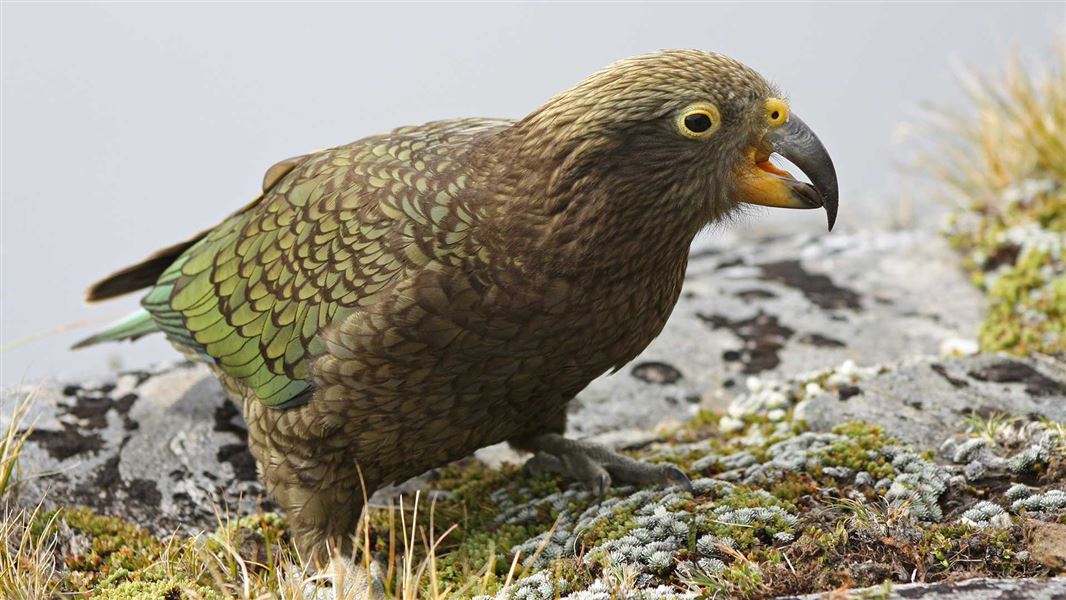Archived content: This media release was accurate on the date of publication.
Date: 16 November 2023
DOC and OSPRI joint research, undertaken near Arthur’s Pass in 2022, involved testing whether kea attracted by audio lures and exposed to the repellent anthraquinone in non-toxic baits, became averse to the baits, and less likely to eat 1080 baits.
Kea are smart but endangered with introduced predators like stoats and feral cats the major threat to their survival.
Predator control significantly benefits kea populations but unfortunately 1080 also poses a risk to individual kea, which is greater in areas like Arthur’s Pass where they have learnt to scavenge human food. Considerable work has gone into mitigating this risk to kea, including research into repellents.
DOC Director Terrestrial Biodiversity Hilary Aikman says about 90 kea were monitored using radio transmitters and cameras during the trial, and results show the repellent baits did not cause the hoped-for aversion.
“Significant numbers of kea were attracted to the 25 repellent bait sites using recorded kea calls but few adverse reactions were recorded, and kea continued to visit and interact with the bait undeterred.
“Overall, kea ate little of the repellent bait – likely not enough to make them feel sick and create a lasting aversion – as previously seen when tested with kea in captivity.
“Unfortunately, use of the repellent prior to the predator control operations around Arthur’s Pass last spring did not reduce risk to kea.
“We are disappointed with this result, but it was important to further investigate anthraquinone as it had previously shown promise.
“Overall, we know predator control significantly improves nesting success and long-term survival of kea and we remain committed to further work to help keep kea safe during 1080 operations,” Hilary Aikman says.
Anthraquinone was previously tested on kea in captivity where the birds learnt to avoid cereal baits. It was also trialled by Zero Invasive Predators (ZIP) in South Westland in 2018 – where animal carcasses were used to attract kea to repellent sites – with promising results.
DOC and the Kea Recovery Group are now considering the next steps in the ongoing research to protect kea and grow the population of this taonga species, particularly in eastern areas of the South Island where their numbers are in greatest decline.
Social science is also being used to inform how best to encourage people not to feed kea or allow scrounging. New ‘don’t feed kea’ signs are being installed at key visitor sites.
Kea survival around Arthur’s Pass since last year’s predator control has been high with only one monitored bird killed by a stoat since then. Kea will continue to be monitored over the coming year to measure the effects of stoat suppression longer term.
The predator control operations over a combined 73,000 ha aimed to help to eradicate bovine TB and protect kea as well as other threatened species such as roroa/great spotted kiwi, pīwauwau/rock wren and mohua/yellowhead.
Background information
All aerial 1080 operations in areas where kea live must follow DOC’s Code of Practice, which has measures to mitigate the risk to kea based on the latest research, including bait type, sowing rate, operation design and proximity to known kea scrounging areas.
Contact
For media enquiries contact:
Email: media@doc.govt.nz
